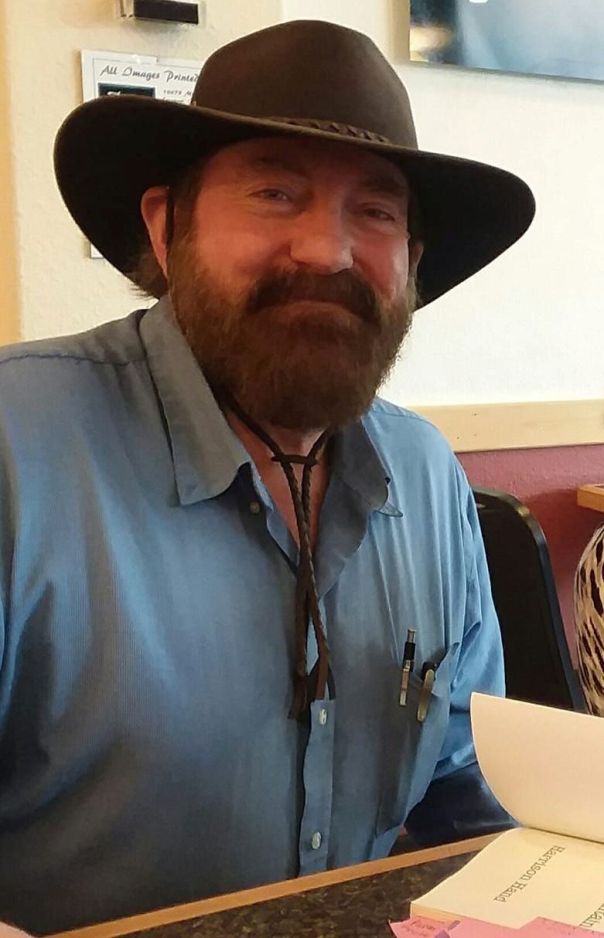
Artist and author Harrison Hand of Loveland poses by one of his books in one of his Facebook photos.
Artists can love what they do, but they shouldn’t be doing it for free—or they might die of exposure.
“The shark is who’s going to take advantage of you and eat you versus those who will carry you,” said Harrison Hand of Loveland, Colo., an artist, illustrator and filmmaker who owns Harrison Hand Studios. “We have to shift how we get discovered and how we get marketed.”
Hand gave a presentation, “Dying of Exposure: the problem of working for free and how to fix it,” at the Oct. 22 Loveland Artists Collective monthly meeting on ways artists can profitability market and price their work. The Artists Collective brings together visual, performing and literary artists to discuss topics related to the arts and meets at various locations, including Artworks Loveland, an art studio and gallery in downtown Loveland, where Hand spoke.
Artists who do not have a large marketing budget may resort to low-cost gorilla marketing to get their work in view of the public, but what Hand calls sharks can come in, promising, “Give me this, and I’ll promote you.”
Sharks and Dolphins
Sharks can take on various forms, offering payment in forms of exposure when artists need to earn a living. They may want artists’ stuff for free. They may be two-headed flees/fleas who take your stuff and flee or put your stuff in a flea market setting surrounded by stuff sold from elsewhere, causing you to drown from the false exposure. Or they may be the friends and family types who expect you to work for free and come up with an excuse to take what you make.
Instead, artists need to identify the win-win marketing dolphins in their midst in the sea of sharks that can carry them to paying customers,
“Dolphins are going in the same direction as you to carry you to the customer,” Hand said. “Sharks take you where they want to go. Dolphins take you where you want to go.”
Dolphins get excited about what you do and tell everyone, or they make it easier for you to get discovered. Dolphins who are artists may cross-promote each other’s work, something artists can do by connecting and sharing what they like.
“You want to find those key people who talk you up and promote you,” Hand said.
If artists do decide to charge below their normal rates, they can mention what they normally charge and say they will do it for less and expect something in return, Hand said. Or they can state their rate and suggest other sources, such as students who may charge less, he said.
“Don’t devalue your time because you love doing it,” Hand said.
Working for Free?
Hand turned the rest of the discussion over to the 30-plus artists and writers in the audience. They suggested when requests for free work are sought to possibly set aside a couple of charitable projects a year and once that is met to roll over requests to the next year on a first-come, first-serve basis.
“I try to, in the nicest way possible, explain first of all, there are ways to ask artists for their art,” said Sheron Buchele Rowland, fiber artist and metalsmith and organizer of the Artists Collective. “It’s symbiotic. We’re carrying each other forward.”
Some of the artists questioned how much they should charge for their work—it’s based on materials, market and time spent both on the work and developing the skills to do it, Hand said.
“What we do is unique. We all have a unique vision to show the world,” Hand said. “What I do is a skill just like what you do is skill.”
The Artists Collective provides education and networking opportunities for artists and aims to activate the arts to promote their success.
“We are about community. We are about networking,” Buchele Rowland said. “That community is really critical because we spend so much time in our studios by ourselves.”


